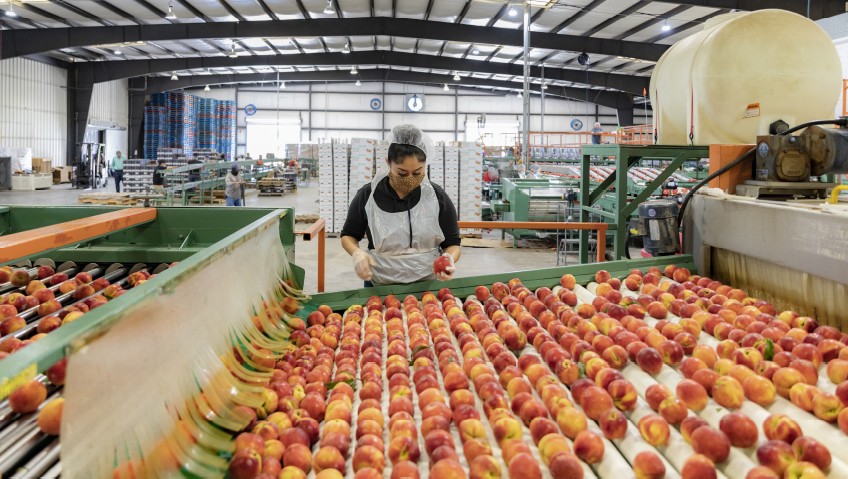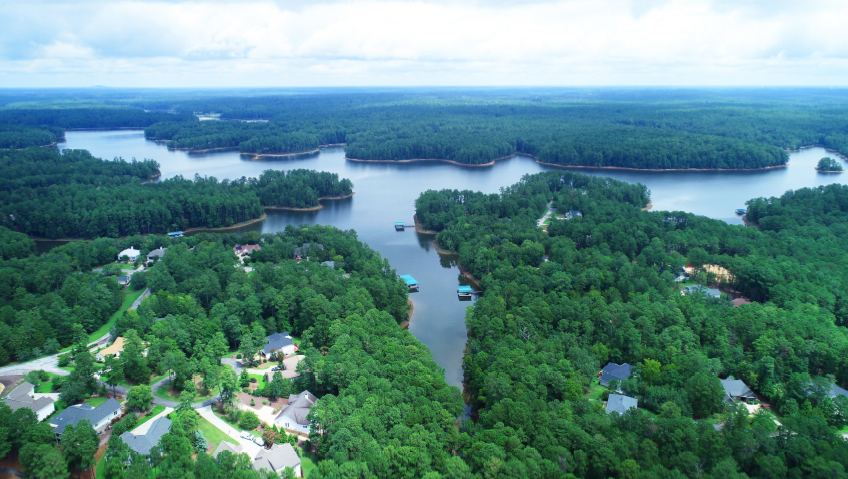HAWE Hydraulik has gone electric, so to speak. Headquartered near Munich, Germany, with subsidiaries around the world including in North America, the company designs and manufactures hydraulic valves and pumps. There is a growing emphasis on electrification services and control solutions, however.
“Electrification is probably the most interesting and newest topic that the HAWE Group collectively is exploring. Back in 2019, we acquired a company called Mattro, and we’ve now integrated them into our fold. We’re calling that division HAWE Mattro. They are an Austrian-based team with a production line for building batteries and integrating electrification systems,” explains Electronics Product Manager, Chase Younker, who works for HAWE’s U.S. subsidiary. “With electrification, we are adapting to a world that is changing.”
The company (whose name is pronounced ‘Ha-Vee’ and was previously profiled in February 2023’s Resource in Focus) has no intention of abandoning its original mission of making hydraulic valves and coming up with integrated solutions incorporating these valves. In fact, it wants to “make sure that hydraulics still has a seat at the table,” even as it broadens its focus, Younker says.
Hydraulic valves control the direction of liquids used within a hydraulic system to activate an equipment or machine function. HAWE’s valves are used in agricultural, construction, and forestry machinery, lifting platforms, loading cranes, drilling equipment, and more, and HAWE aims to establish itself as a leader in providing electrification solutions within some of these same sectors. It has also branched into new sectors such as the consumer boat market.
“There’s a big push to get electrified boats out there, and they fit our offering quite well,” shares Younker.
The company is also making a splash within the world of electrified field robots, used to seed, weed, and harvest plants in agricultural settings. In addition to providing automation, consistency, and accuracy, field robots are lighter than conventional tractors, resulting in less soil compaction. HAWE has developed a field robot platform called ROVO, which is powered by lithium-ion batteries.
“ROVO is a fully developed, off-highway, tracked electrification platform that allows customers to mount and integrate their application on board. It operates on our 96-volt battery, which is part of our standard product offering,” says Younker.
Field robots fitted on the ROVO platform have a 40-kilometer range, can toil continuously for four hours before requiring a recharge, and do not produce any emissions. Beyond farm work, ROVO has been utilized for firefighting, search and rescue, and some industrial and drilling applications, says Younker.
There are different levels of electrification, including hybrid outcomes featuring conventional fossil fuel sources and some electrified functions.
“In electrification, the entire vehicle is often not redesigned, but proven work processes are electrically driven,” explains HAWE literature. The company’s work with truck mounted cranes is a case in point. Under its guidance, a modified truck mounted crane might include a traditional engine along with a separate electric drive to power the hydraulic pump for boom lowering, lifting, swinging, hoisting, and other work functions.
HAWE’s work with controls is another key area of expertise, and the company recently partnered with Xtreme Manufacturing to produce a massive, tracked telehandler nicknamed ‘Trackzilla.’ Officially called the XR50100-G, this telehandler boasts a 100-foot lift height, 75-foot forward reach, 675-horsepower engine, dual hydrostatic transmissions, and a 50,000-pound lift capacity. In an exuberant LinkedIn post, Younker described Trackzilla as “a one-of-a-kind, absolute MONSTER of a machine, with all the GRACE of a ballet dancer.”
“We did all of the programming and integration of all the CAN sensors including the CAN valves… We leveraged our hydraulic expertise with our electronic expertise,” he tells us. A controller area network (CAN) is a system that links ‘intelligent’ devices in industrial settings. CAN bus technology features prominently in HAWE controls.
Using CAN bus, the company can “tie all your smart sensors together,” in mobile equipment and do the same “in the mobile hydraulics world as well, mostly with our PSL CAN product which is essentially a spool valve with electronics and CAN bus communications onboard. So you can send it a CAN message and get the actuation that you need and get a lot of diagnostics out of it as well… Our CAN lite product [is] a budget-friendly version that doesn’t include internal spool feedback for high accuracy. This allows customers who don’t need that accuracy but want to take advantage of the wiring benefit and CAN bus integration,” he explains.
The company’s controls can be used to remotely monitor and control tractor attachments for improved efficiency, productivity, and machine health. The ROVO platform is also fitted with a HAWE control.
ROVO has “the motors and the drives and the controls necessary for radio remote operation… but then, we add an interface so customers can control it with CAN bus. That allows you to tie in telematics, automation, even full autonomy if you want,” states Younker.
The company also continues to develop hydraulic valves. “We recently launched what we call our MICK product which is, more or less, an add-on to our standard PSL valve,” he says. The MICK 3 valve is a proportional directional spool valve that controls the velocity and direction of either individual or multiple hydraulic consumers when actuated at the same time. The MICK 3 valve enhances safety and energy efficiency and has the benefit of being lighter, smaller, and less expensive than conventional solutions.
HAWE has been growing its footprint within the renewable energy sector. Over the years, it has produced over 20,000 hydraulic pitch systems for wind turbines and provides turbine parts and retrofit services as well. The company also makes products that can position solar panels.
Theme parks represent another intriguing market for HAWE’s wares. It supplies a special hydraulic locking system for theme park rides that enhances safety in lap, shoulder, and stomach restraints.
“When you get on a roller coaster and feel that padded lock mechanism come in place, that’s a HAWE lock mechanism that’s actually providing you with that safety in a lot of cases. We have a pretty good market share there,” says Younker. The same hydraulic locking system is used in simulators, virtual reality rides, and 4D cinemas, which provide physical sensations of motion along with sound and pictures.
HAWE Hydraulik was founded in Munich in the late 1940s, a few years after the Second World War ended. Manufacturing is currently done at a state-of-the-art plant in Germany. The company’s American subsidiary, headquartered in Huntersville, North Carolina, handles distribution and warehousing for the U.S. Younker works in a HAWE office in Clackamas, Oregon that provides technical support and custom-engineered solutions.
HAWE products used to be distributed in Canada through Mississauga, Ontario-based firm, Hydra-Fab. HAWE eventually bought Hydra-Fab and then launched an official HAWE Hydraulik Canada subsidiary on July 1, 2023. With over 40 employees, the Canadian operation is “doing really well and also growing at a good clip. It provides the same type of engineering and distribution [as the U.S.],” says Younker.
One thing that has not changed at HAWE is the company’s business model. The firm works directly with original equipment manufacturers and “qualified electrification distributors,” says Younker.
HAWE tries to impart best practices to its clients, “because I think there are a lot of ways to do things incorrectly. We want to make sure our products are being used in the best way possible. Leveraging our expertise for our customers and distributors and providing a bit of that integration knowledge helps a lot,” he adds.
“We’re very vertically integrated,” which meant that HAWE was not as adversely affected by COVID-related supply chain chaos as many of its competitors. “During the supply chain shortages that were experienced globally in the past few years, we were relatively unaffected because we had so much control over how we get the steel, how we machine it. We really control every aspect of our production in that regard. [We didn’t] succumb to a lot of the challenges that some of our competitors did,” explains Younker.
That is not to say that HAWE Hydraulik has faced no challenges of its own. “I think everyone’s experiencing personnel shortages. It’s hard to find good help… Our European subsidiaries [are trying to address this issue by] working with universities. We’re making more of an effort in North America to do the same,” he says.
Personnel shortages aside, Younker is excited about HAWE’s direction and growth potential.
Going forward, “We want to expand our battery portfolio. We currently have a 48-volt and a 96-volt battery. We also recently came up with a modular energy pack and this allows us to take our battery modules and stack them in a series to achieve various high voltage applications: 400 volts, 600 volts. What we’re really trying to do is stay on top and make sure we design products that are going to fit now and in the future.”






